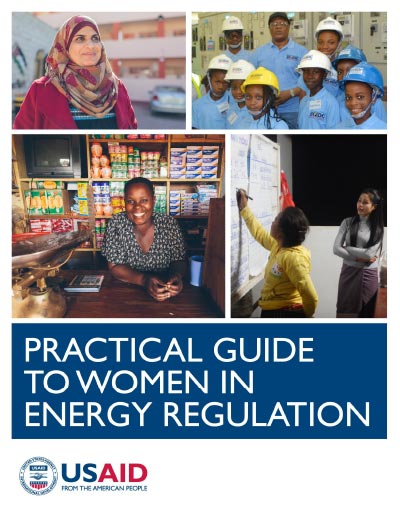Speeches Shim
This guide provides strategies for energy regulators to better integrate women in multiple facets of energy regulation, including employment, energy regulatory policy, and energy infrastructure projects.
Research has demonstrated that gender-diverse workforces are good business practice and that gender equity in energy regulation improves economic prosperity for all citizens. In addition to empowering and supporting women as employees and policy-makers, the inclusion of women will improve consideration of gender-differentiated impacts of regulatory policy and energy decisions on energy users, and identification of ways to minimize negative impacts from infrastructure projects and help direct those projects to improve the livelihoods of vulnerable populations.
Through its international work, the National Association of Regulatory Utility Commissioners (NARUC) has observed disproportionately low levels of participation by women in energy regulation and the need for a resource that can inform and provide guidance to energy regulators on gender equality. To meet this need, the Practical Guide to Women in Energy Regulation introduces concepts of gender equality in energy regulation and details a menu of strategies for regulators to improve gender equality within their areas of influence and jurisdiction. The guidance is accompanied by examples from countries worldwide and several case studies to explore strategies in practice.
The guide provides energy regulators with an overview of the energy regulatory frameworks and opportunities to advance gender equality, and analyses of three key pathways for gender inclusion:
- The Workforce
- Energy Regulation
- Infrastructure Projects
In each of these respective sections, the guide provides:
- An overview of existing barriers and challenges to women's participation.
- A suite of strategies to more fully support gender equity, with illustrative examples.
- Case studies drawing from the recent application of strategies to advance gender equity in energy regulation in different country contexts.
This guide was made possible by the support of the American people through the United States Agency for International Development (USAID). The contents of this guide are the sole responsibility of the National Association of Regulatory Utility Commissioners and do not necessarily reflect the views of USAID or the United States Government.


Comment
Make a general inquiry or suggest an improvement.